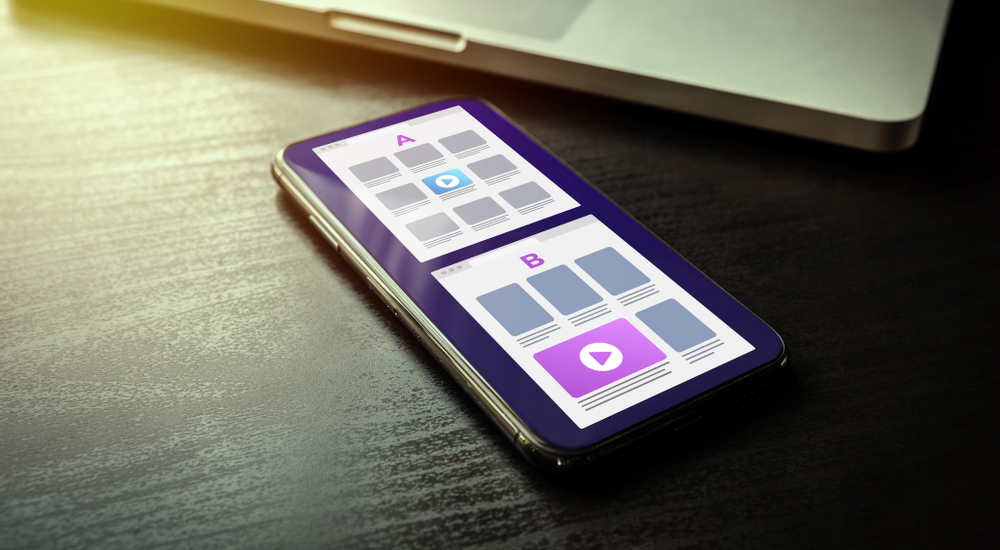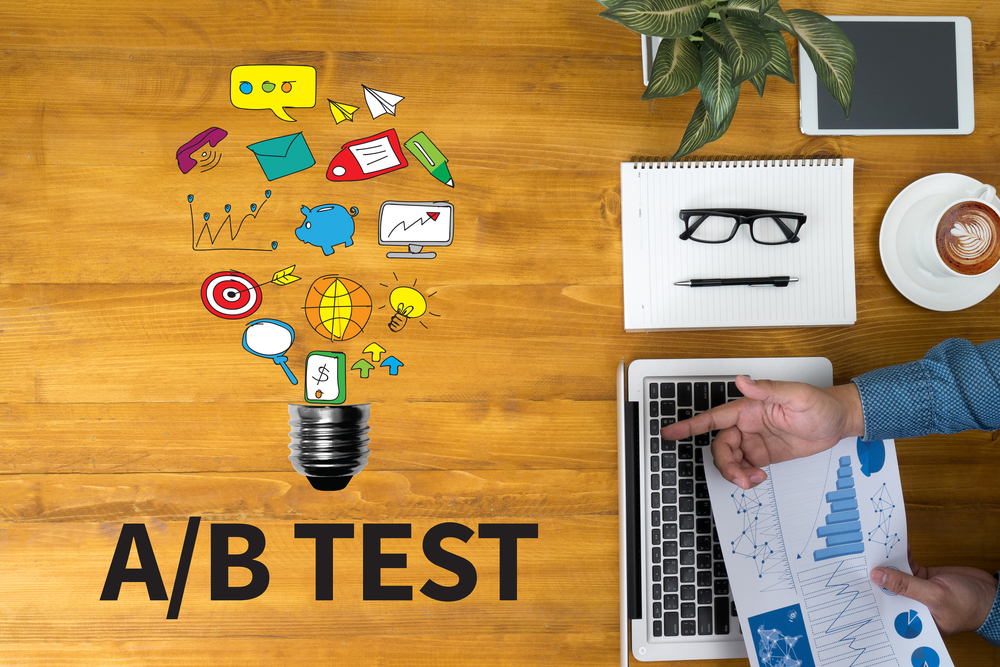This post is updated on May 2024.
In today’s crowded mobile app landscape, standing out and retaining users is more challenging than ever. It’s no longer enough to simply launch a great app; you need to continuously optimize and refine it to keep users engaged and coming back for more.
That’s where mobile A/B testing comes in. This powerful technique empowers app developers and marketers to make data-driven decisions, enhancing user experience and driving higher conversions.
What is Mobile A/B Testing?

Mobile A/B testing, also known as split testing, is a method of comparing two or more versions of your app to determine which performs better. By randomly dividing your audience into groups and exposing each group to a different variation, you can gather valuable data on user behavior and preferences.
The Significance of A/B Testing for Your App’s Success
- Boost Conversions: A/B testing can reveal the most effective design elements, calls to action, and user flows, leading to higher conversion rates and increased revenue.
- Enhance User Experience: By testing different variations of your app’s interface, features, and content, you can identify the elements that resonate best with your users, ultimately improving their overall experience.
- Data-Driven Decision Making: A/B testing eliminates guesswork, allowing you to base your app optimizations on concrete data rather than assumptions.
- Continuous Improvement: By running A/B tests regularly, you can continuously refine your app and stay ahead of the competition.
Real-World A/B Testing Success Stories

Several major apps have leveraged A/B testing to achieve remarkable results:
- Houseparty: Increased user onboarding opt-in rates by over 15% through A/B testing.
- Duolingo: Grew its user base from 3 million to a staggering 200 million with the help of A/B testing.
- Pinterest: Used A/B testing to optimize user acquisition and retention strategies.
- Grene: An eCommerce brand in Poland that used VWO mobile A/B testing to increase their overall conversion rates from 1.83% to 1.96%. Click here to read!
A/B Testing Framework: Your Roadmap to Optimization

- Formulate a Hypothesis: Start by identifying a specific aspect of your app you want to improve (e.g., increase click-through rates on a particular button) and develop a hypothesis about what changes might lead to better results.
- Create Variations: Design two or more versions of the element you’re testing. For example, you could test different button colors, text variations, or layouts.
- Split Your Audience: Randomly assign users to different groups, with each group seeing a different variation of your app.
- Run the Experiment: Collect data on user behavior and interactions with each variation.
- Analyze Results: Use statistical analysis to determine which variation performed better based on your predefined metrics.
- Implement the Winning Variation: Roll out the winning variation to all users.
- Repeat and Iterate: Continue testing and refining your app based on the data you gather.
Key A/B Testing Ideas for Mobile Apps:
- Onboarding Flow: Experiment with different onboarding flows to optimize user engagement and retention.
- Push Notifications: Test different message variations, timing, and frequency to maximize engagement without annoying users.
- In-App Messaging: Try different messages, placements, and triggers to improve user engagement and conversions.
- App Store Listing Elements: Test variations of your app icon, screenshots, title, and description to increase downloads.
- Pricing and Subscription Models: Experiment with different pricing structures and offers to find the optimal balance between revenue and user acquisition.
Best Practices for Successful A/B Testing:

- Define Clear Goals: Determine what you want to achieve with your A/B test (e.g., increase click-through rates, improve retention) before you start.
- Choose the Right Metrics: Select relevant metrics that align with your goals and track them throughout the experiment.
- Run Tests Long Enough: Allow sufficient time for your A/B tests to gather statistically significant data.
- Segment Your Audience: Test different variations on specific user segments (e.g., new users, returning users) to personalize your app experience.
- Avoid Common Mistakes:
- Don’t end your tests prematurely.
- Ensure enough traffic is sent to each variation.
- Don’t run too many tests simultaneously.
- Factor in seasonal changes that might impact user behavior.
Essential A/B Testing Tools and Platforms:
-
Mixpanel: A powerful product analytics platform that offers A/B testing capabilities, allowing you to experiment with different features and user flows.
-
Optimizely: A leading experimentation platform that enables you to run A/B tests on various aspects of your mobile app, from UI elements to marketing campaigns.
-
Firebase A/B Testing: A free A/B testing tool from Google that integrates seamlessly with Firebase, offering a user-friendly interface and robust experimentation capabilities.
Beyond A/B Testing: Additional Strategies for App Growth
While A/B testing is a critical tool, it’s not the only strategy for app success. Consider these additional tactics:
- App Store Optimization (ASO): Optimize your app’s visibility in app stores through keyword research, compelling visuals, and persuasive descriptions.
- App Marketing Campaigns: Launch targeted marketing campaigns on social media, search engines, and other platforms to reach a wider audience.
- User Feedback and Reviews: Actively solicit and respond to user feedback to improve your app and address any issues.
- Partnerships and Collaborations: Partner with other businesses or influencers to cross-promote your app and reach new users.
By combining A/B testing with these additional strategies, you can create a comprehensive approach to app growth that delivers lasting results.
Your Path to App Success Starts Now
In the fast-paced world of mobile apps, continuous optimization is key to staying ahead of the curve. By embracing A/B testing and making data-driven decisions, you can ensure your app delivers the best possible user experience, drives higher conversions, and achieves long-term success.



